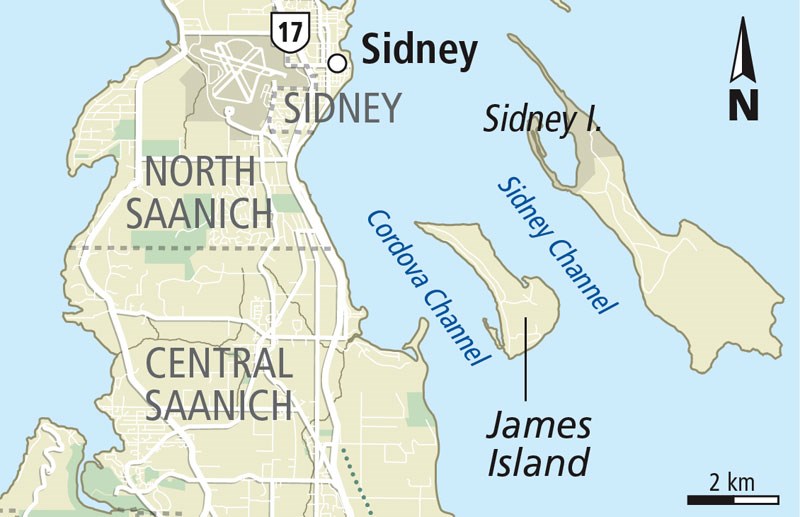The former owner of James Island must pay $4.75 million to the property’s current owner for work done to clean up contamination resulting from its historic use as an explosives manufacturing site.
PPG Architectural Coatings Canada Inc. (previously ICI Canada Inc.) had carried out environmental remediation prior to selling the island. The present owner, J.I. Properties Inc., claimed $5.3 million to cover its 2004-2006 costs to upgrade the property, located off the east side of the Saanich Peninsula.
The 780-acre island is for sale at $75 million. It includes an 18-hole Jack Nicklaus-designed golf course, a 5,000-square-foot main house, guest cottages, a western-themed village and a conservation area. Seattle telecommunications billionaire Craig McCaw owns J.I. Properties.
In a decision released Tuesday, B.C. Supreme Court Judge Nigel Kent ordered that ICI pay J.I. Properties $4.75 million.
The Environmental Management Act allows J.I. Properties to recover remediation costs from a previous owner/operator who caused the contamination, Kent said.
James Island was used for explosive manufacturing and storage between 1913 and 1985. ICI took it over in 1954, owning it for more than three decades. This makes it a “responsible person” under the environmental act, Kent said.
ICI disagreed that J.I. Properties was entitled to payment, arguing the current owner was aware of the island’s history when it was purchased. ICI said it had remediated the island to the Ministry of Environment’s standards of the 1980s, the decision said.
Explosives manufactured on James Island included TNT (about 19 million kilograms went to the Allies during the First World War), nitric acid, sodium sulphate, black powder, dynamite, nitroglycerine, DNT and nitro-carbo-nitrates, which are combinations of ammonia nitrate fertilizer and fuel oil.
ICI carried out remediation in six areas, mainly between 1986 and 1988, to deal with contaminants including lead, mercury, TNT and DNT.
When ICI sold James Island in 1988, a restrictive covenant was filed, including a description of past activities and allowed future uses for certain areas of the island. J.I. Properties subsequently bought the island in 1994.
By 2004, detailed government regulations for contaminated sites came into effect. J.I. Properties took on the job of cleaning up specific areas of concern.
Work included blasting and detonation, and excavation and removing contaminated soils. About 12,200 cubic metres of soil were removed, containing contaminants from explosives, cyanide, metals and petroleum hydrocarbon and polycyclic aromatic hydrocarbon, court was told.
An ICI consultant argued that the work could have been carried out using a different method at a lower cost.
J.I. Properties was not awarded the full amount claimed because its remediation work by detonation was “misguided,” Kent said. Also, a review of invoices found some grey areas where work had been carried out on other aspects of improvements to the island.



